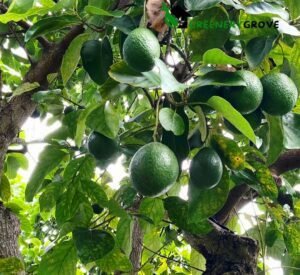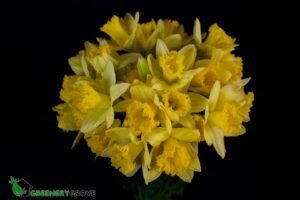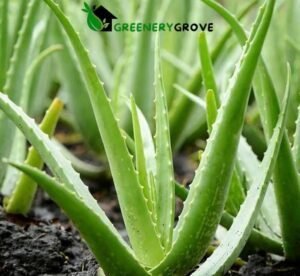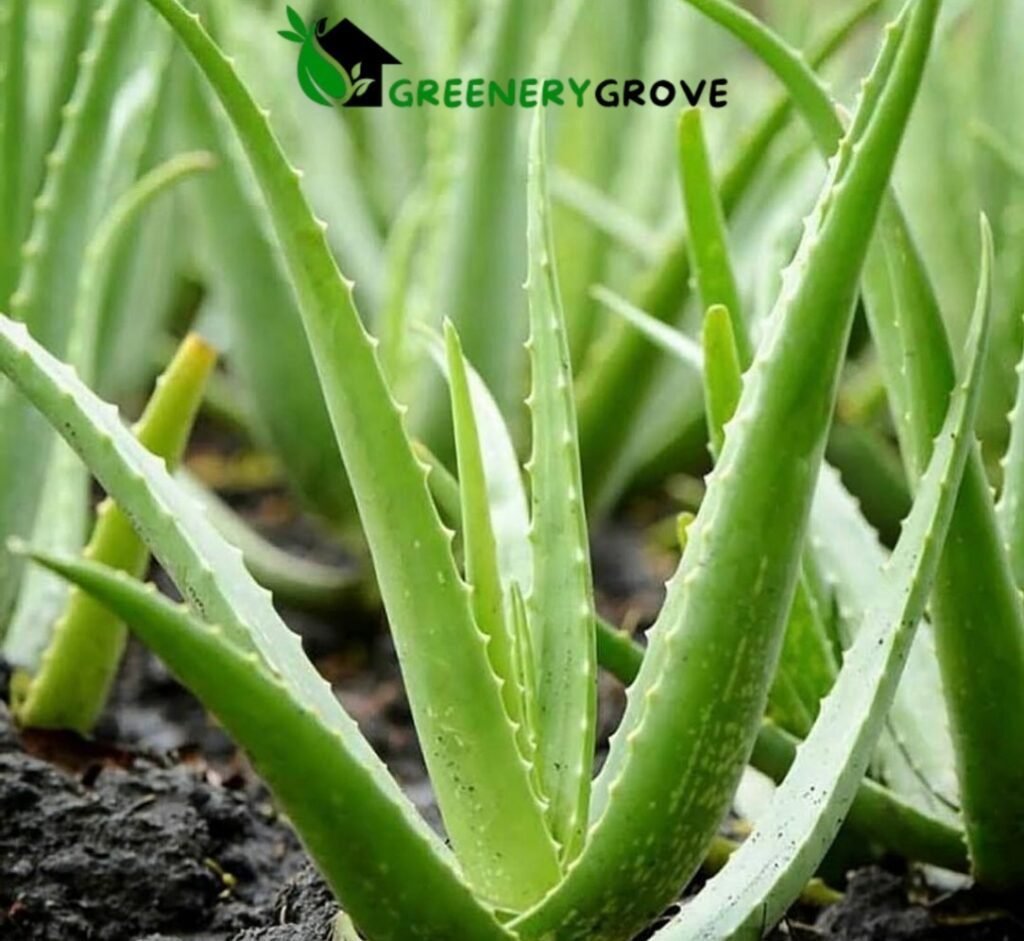Aloe vera is an evergreen perennial and succulent plant species. It has been known and used for
its health, beauty, medicinal, and skin care properties for centuries. It mainly comes from the
Arabian Peninsula. Aloe vera generally grows worldwide in tropical, subtropical, and arid
climates. Acemannan, a polysaccharide gel is found in large quantities in Aloe vera leaves. This
gel can be used topically. Aloe skin is toxic because it contains aloin. Now it is cultivated for
commercial purposes. Aloe vera’s acemannan is also used in many products like skin lotion,
cosmetics, ointments, insect burns, and wind burns. Some allergic reactions could happen but
it’s rare. The species looks so attractive that people use it indoors as a potted plant for
decorative purposes.
Scientific classifications
Aloe Vera was originally identified by Carl Linnacus in 1753 as perfoliata var. After years,
scientists explained this species in 1768 by Nicolaas Laurens Burman as Aloe vera in Flora Indica
on 6 April and by Philip Miller as Aloe barbadensis.
Kingdom : Plantae
Clade : Trancheophytes
Clade : Angiosperm
Clade : Monocots
Order : Asoparagales
Family :Asphodelaceae
Subfamily: Asphodeloideae
Genus : Aloe
Species : A. vera
Descriptions of Aloe Vera
Aloe vera grows up to eighteen inches of long, fleshy, narrow green leaves in a rosette structure. With
tiny white teeth on the borders, the leaves have a green to gray-green color. When the plant is under
drought stress the leaves turn reddish purple.
Height: The plant usually reaches a height of 1-2 feet (30-60 cm) and a width of 2-3 feet (60-90
cm). When conditions are good, the plant can reach a height of three feet (90 cm). Generally,
10–12 is ideal for aloe vera growth.
Leaves: Thick and meaty, the leaves range in color from green to grey-green, and certain types
have white speckles on the upper and lower surfaces of the stem. The leaf characteristics
are small white teeth and a serrated edge.
Phytochemicals found in aloe vera leaves, including lignans, phytosterols, polyphenols,
acetylated mannans, polymannans, anthrones, and other anthraquinones including emodin and
other lectins, are being investigated for potential bioactivity.
Flowers: Generally, Summertime sees the production of the blooms on a spike up to 90 cm (35
in) tall. In general, flowers do not appear on plants until they are prepared to reproduce. Aloe
vera needs to be healthy and mature—at least four years old—to flower. This necessitates
surroundings that are similar to the plant’s native habitat.
Roots: Aloe vera, like other Aloe species, creates an arrangement with roots called arbuscular
mycorrhiza, which facilitates the plant’s greater uptake of mineral nutrients from the soil. Since
the roots of Aloe vera only reach a depth of 20 to 30 cm, excessive soil disturbance is not
recommended. Agroclimatic conditions and soil type will determine how often plowing and
leveling should be done. Plot sizes should be appropriate for the field’s division.
Cultivations of Aloe vera
Aloe vera is a topical medicinal plant. This plant made a place in the minds of modern gardeners. Aloe
vera has been cultivated extensively as a decorative plant.
Soil: There are numerous soil types in which the plant can be grown, including sandy coastal soils
and loamy soils. It is sensitive to wet situations. Furthermore, the crop grows well in light soils.
Higher pH and concentrations of Na and K salts are acceptable to it. In heavy, medium-fertile
soils like black cotton soil, growth occurs more rapidly. It grows well and produces more leaves
in well-drained, coarse sandy to loam soils with a pH range of up to 8.5.
Climate: Due to its great versatility, aloe can thrive in a variety of climates. It grows well in both
warm, humid climates and arid ones. But it’s unable to tolerate very cold temperatures. Dry,
sandy soils are ideal for the plant’s growth. in areas where the yearly rainfall is between 50 and
300 mm. It requires defense against frost and chilly winter weather.
Types: Aloe barbedensis, Aloe chinensis, Aloe perfoliata, Aloe vulgaris, Aloe indica, Aloe
littoralis, and Aloe abyssinica are all commercially significant subspecies. National Botanical
Garden and ICAR, the Plant Genetic Resource, have made available cultivars such as IC111271
IC111280, and IC111269. The Central Institute of Aromatic and Medicinal Plants
The AL-1 cultivar has also been made available for growing in Lucknow.
Land preparation and planting: The entire area is extensively ploughed and cross-ploughed.
During the final plowing, 15 t/ha of farm yard manure is added. At 45 or 60 cm intervals, ridges
and furrows form. If needed, the land may be irrigated. Suckers are sown. keeping the
recommended distance between them at 40 or 30 cm.
Fertilizers: Compost and manure from the farm yard work nicely on the crop. FYM @ 15 t/ha is
applied during the first year of plantation during the land preparation. Every year in the years to
follow, the same dosage of FYM is administered. In addition, a base dose of 50:50:50 kg/ha of
N:P: K is applied.
Watering: Aloe grows well in both rainfed and irrigated environments. After planting, watering
should be provided as soon as possible throughout the summer. Ensure high returns. On the other
hand, the plants are delicate to standing water.
Plant protection: It is well known that fungi may infect aloe and cause leaf spot disease. This
negatively impacts the gel’s yield and quality. Spraying can be used to control the illness and
suggested fungicides.
Harvest: The second year after planting, the thick, meaty leaves are ready for harvesting.
Three to four leaves are typically removed from each plant to yield three harvests each year.
Harvesting requires a lot of labor. It takes place in the morning and/or evening. Since the scar
will allow the leaves to regrow, the crop can be collected up to five years following planting. In
addition to leaves, side suckers can be sold or utilized as planting material.


Benefits of Aloe vera
Health: It has anti-oxidant and anti-bacterial properties. Aloe vera gel contains anti-oxidants that are
very important for health. It accelerates wound healing. Aloe vera is most commonly used topically
by people as a medication Trusted Source; it is applied topically rather than internally. According
to studies, it works well as a topical treatment for burns of the first and second degrees. It
reduces the dental plague. Gum and tooth decay are two extremely prevalent health issues.
Reducing the amount of plaque or bacterial biofilms that accumulate on the teeth is one of the
best strategies to avoid these diseases. It reduces constipation also.
Skin: There are numerous advantages that aloe vera has for your skin. Its all-natural gel is well
known for being calming and hydrating, which makes it a go-to remedy for a variety of skincare
issues. Aloe vera has several benefits, including healing wounds, lessening skin irritation,
relieving sunburns, and even enhancing hair health by preventing dandruff and encouraging
healthy development.
Hair: Aloe vera for hair can do a lot of good for your hair like hair loss, get rid of extra oil from
the scalp, moisturize your hair, and encourage hair growth, The gel found inside the leaves of the
aloe vera plant is the portion of the plant utilized for hair.
Diabetes: Aloe vera has a lower sugar level. Aloe vera is sometimes used as a diabetic
treatment. This is due to the possibility that it will increase blood sugar regulation and insulin
sensitivity.
A review published in 2021 found that the effects of aloe vera on individuals with type 2
diabetes or prediabetes are supported by moderate to high-quality data.
Disadvantages of Aloe vera
The National Center for Complementary and Integrative Health (NCCIH)Trusted Source says that topical
use is likely safe. However, because of its laxative properties, using aloe vera orally can result in
diarrhea or cramping in the stomach. Additionally, there have been some reports (Trusted
Source) linking oral aloe vera preparations to liver damage.
Furthermore, a non-decolorized whole-leaf extract of aloe vera could come with some dangers.
This type of aloe vera is extracted directly from the plant’s leaves; chemicals that cause cancer
are not removed by filtering. According to the NCCIHTrusted Source study, Nondecolorized
whole leaf extract of aloe vera appears to be linked to a higher risk of cancer in rats.
Faq’s
Is it good to take aloe vera every day?
Daily consumption of aloe vera juice is harmless, according to Czerwony. However, consuming
too much of it may result in diarrhea or cramps. Consequently, an electrolyte imbalance may
develop.
What are the medicinal uses of aloe vera?
Aloe is used both internally and topically (applied to the skin). Aloe vera is recommended for
topical treatment of burns, radiation-induced skin toxicity, oral submucous fibrosis, lichen planus
(an extremely irritating rash on the skin or in the mouth), acne, and burning mouth syndrome.
Is aloe vera good for the skin?
Aloe latex, a yellow liquid, is also present in the leaf. Chemicals in this plant-based treatment
ease skin edema, redness, and scaling, calm irritated skin and encourage the production of new
skin cells. Aloe vera is beneficial for treating skin disorders like acne because of these qualities.
Can aloe vera remove dark spots?
For sure, Aloe vera helps to remedy dark sports. Aloe vera eliminates acne scars, marks, and
other related issues. Acne and pimples are the cause of the black patches. When it comes to acne
and pimple spots, aloe vera is the greatest dark spot corrector.
More Blogs






Exploring Daffodils: From Origins to Symbolism and Garden Tips


Alocasia: The Majestic Elephant Ear Plant – A Guide To Varieties, Care, And Decorative Ideas


A Comprehensive Guide of Aloe Vera: Benefits, Development, and Uses



